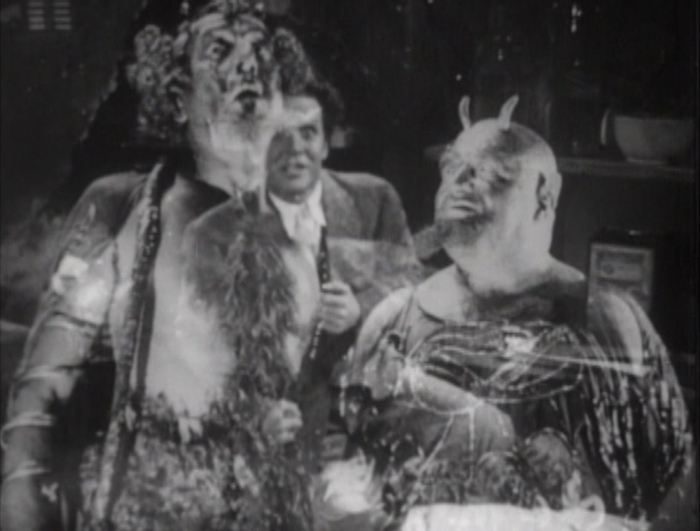Maniac (1934)
Watching films from the 1930’s and earlier takes some patience from modern viewers. Even studio productions can feel amateurish, as performers tended to overact, the camera was generally static, and early sound films often lacked background music. That said, there was some interesting experimentation going on in a still relatively new medium, so viewers willing to do without some modern polish can find some genuinely interesting material.
Which leads me to 1934’s Maniac, directed by Dwain Esper, which was produced outside the studio system and was thus free to include things like extra violence and bare breasts. Before getting too excited, though, keep in mind this was still 1934, so there’s not really anything a modern audience would find remotely shocking.

The premise of the movie is a promising one. A scientist, Dr. Meirschultz, is experimenting on bringing the dead back to life; his assistant, a former performer and impersonator named Don Maxwell, is sent to retrieve bodies for him. When he fails to procure one, though, the doctor orders Maxwell to shoot himself so he can perform the revivification on him; Maxwell, understandably, shoots Dr. Meirschultz instead. He then reasons that the police will come looking for him once people notice the doctor is missing, but nobody will notice if Maxwell is gone, so he decides to impersonate the doctor until he figures out the formula to revive him.
If the film had more than fifty minutes, or just a more polished script, this could’ve been a more interesting film than it is. Unfortunately, Maxwell doesn’t actually do much for the rest of the story, and some events don’t add up to much or are just a bit silly. For example, a woman brings her husband, who’s suffering from hallucinations, in to see the doctor, but of course Maxwell doesn’t actually have the medical knowledge of the man he’s impersonating. So, he injects the man with water, which seems to turn him into Mr. Hyde. He starts screaming, runs about, find a woman the doctor had revived from death the previous day and grabs her and runs off. Neither Maxwell nor the woman do anything to stop him, and neither do anything to bring him back. Now, she does discover part of what Maxwell has done, and expresses interest in killing her husband with the understanding that, if he revives him, she will be able to control him, even though there’s no reason to think that revivification makes the patient more docile and, again, neither of them do anything to find this man before the police do. While they discuss this, the madman has taken that girl out by a wooded area and proceeds to rape her (or at least tear up her shirt and shake her; don’t want to get too graphic, after all).
William Woods, who plays Maxwell, is a decent actor. He and most of the cast do overact a bit, but again that was common at the time and not really a big deal, though a few others, like Horace B. Carpenter (Dr. Meirschultz) really turn it up to eleven, well into comical territory. The camera is static throughout the film, and much of it feels like a filmed stage play, though there are a few interesting shots here and there. I especially like a couple scenes, including one soliloquy, where shots of demons are super-imposed over the screen. Hardly subtle, but effective enough. Making this even more play-like, Maxwell twice directly addresses the camera. There are also several good old-fashioned infodumps, with title cards explaining various aspects of mental illness, which are also the only parts of the film with background music.
So, is Maniac worth watching? As a novelty, sure. It’s hardly a must-see, but if you have an interest in old, little-known films it’s worth fifty minutes.